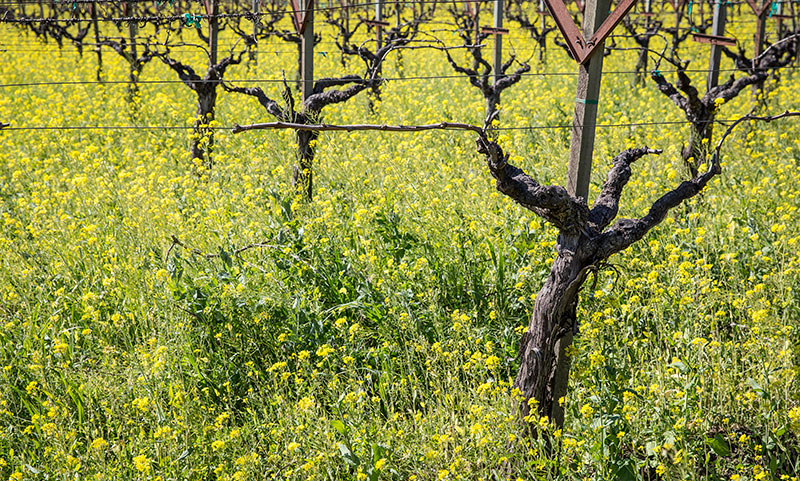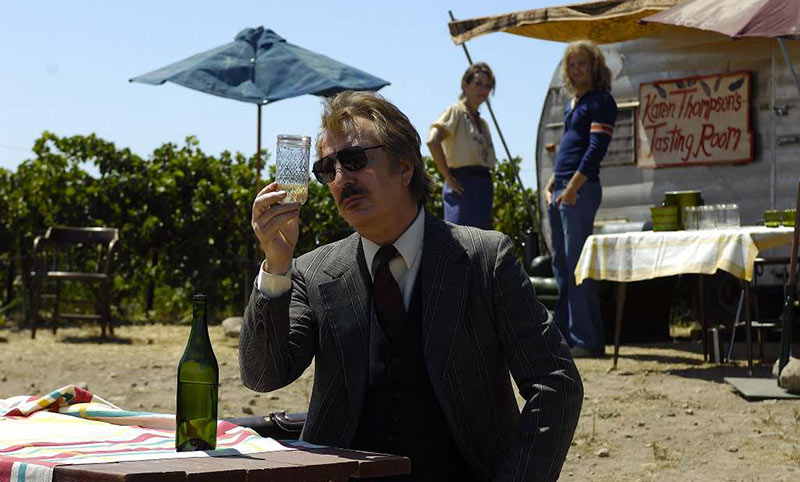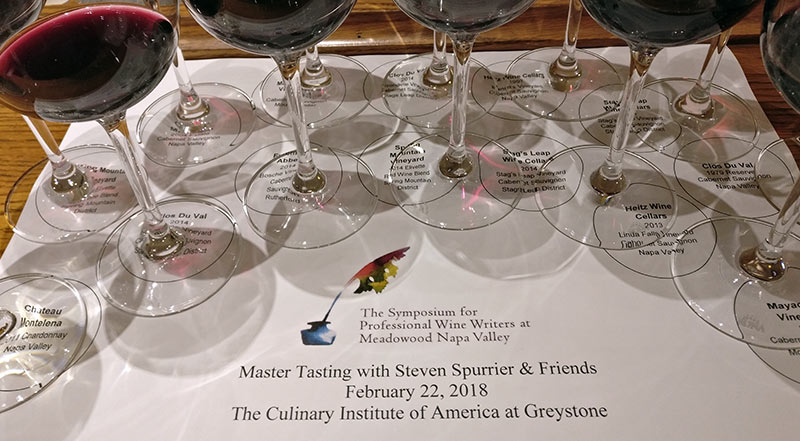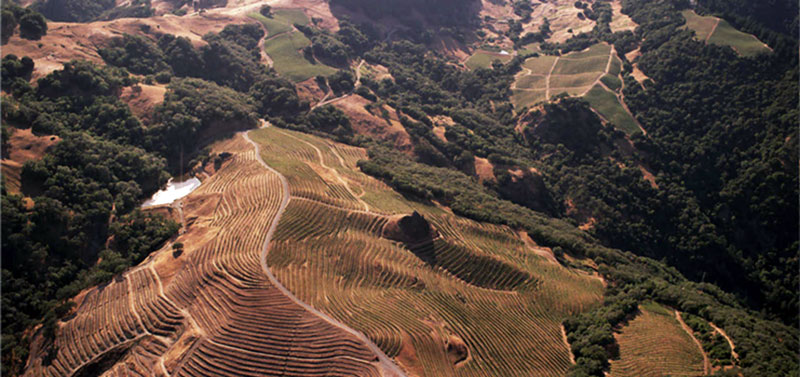This past February, the impossible happened: I actually slept in Napa Valley. In fact, I slept seven nights and passed an entire week within the confines of these world-famous vineyards bracketed by the Mayacamas and Vaca ranges. While this may sound like the ideal getaway for a couple, for a Californian who lived nearly 15 years in San Francisco, it is a concept as alien as life on Mars, or a functioning US government which is sorta the same thing.
I say this given that anyone who lives 1-1.5 hours or less from Napa does any desired jaunt as a day trip. There used to be a lot of those in my life, especially as I started working in wine for a cellar up there but wasn’t based in the region, thus many such jaunts were had.
This is why eating all my meals and staying in the region was something of a strange experience for me and there were many takeaways from this adventure. Given that I was there during Premier Napa to cover it as well as attend a wine writing conference, I was busy, but so was The Valley. This in turn emphasized one of Napa’s massive problems: it’s fucking congested.
Moving around the region is akin to a game of vehicular Tetris now as you need to figure out which direction to move at what hour in order to be able to cross some roads. Small towns like St. Helena and Calistoga are a Godsend as you find stoplights in those towns which allow you to make a south bound left hand turn on Highway 29.
The traffic congestion is however nothing new. When I started having to commute up there 20 years ago for meetings, you basically didn’t leave until after 18:00 as you had to wait for all the tasting room traffic to clear out given the horrendous knot that is the traffic light to head over to Sonoma on Highway 12 (roundabouts aren’t evil people). What has changed in the current incarnation is that it’s like tasting room closing hour, all the time–and this was the off season in the middle of February, the week after Valentine’s Day. I’m sure in the summer, it’s nothing short of insane, but again, this is a reflection of the greater San Francisco Bay Area where it feels as if you’re circulating in a moribund band of cars whenever you drive anywhere.
Sadly, there is little being done about this problem and it continues to be a bigger and bigger issue which entities like Uber and Lyft do not help. After all, how can you limit people who want to come to wine country on public roads via cars as there is no public transportation to get around? The simple answer is that if you want to be always open to the public, you don’t. My former employer, Inglenook (née Niebaum-Coppola) has gone the VIP direction as it seems they have no sign at the winery and to set foot in there you have to have reserved your visit prior to arrival. Many wineries are taking this route and in doing do, raising their visit fees massively to where $50 a person is the “reasonable” price now at a decent winery.
There has additionally been a knock-on effect from this popularity as restaurants are packed full and if you think you can just drop in, it means you’ll find yourself turned away and walking head down, Charlie Brown style to a pizza joint. The same goes for hotels and finding anything decent actually in Napa Valley seems to run at least $200 a night on up. I was nearly giddy in that Editor in Chief found a bargain place in Napa town for $75 a night which was “serviceable” in that motel crash pad kind of way which I can live with for a few nights.
But I mention all of these issues with the congestion as it only emphasizes an aspect to Napa Valley which I’d never realized in doing day trips–it’s very small. When you’ve come across two bridges and slowly make your way there, you never really traverse the whole region, which was my case and so it seems vast. Rolling plains and foothills of vineyards splash around and take you lovingly in their embrace. But once you’ve circulated Highway 29 and Silverado Trail, which are the two main arteries, north to south from Napa town at the bottom to Calistoga at the top, you really feel how tiny of an area it is. People say it’s the same size at the Côte d’Or in Burgundy. In some ways, I’d say that might very well be the case, although only in a casual, spacial observance as the wines couldn’t be further apart.
It was overall a surreal experience seeing Napa 20 years after getting my start in wine there. For people who have been and might want to visit again, I’d advise caution as it has changed a great deal from what you remember although the culinary scene is truly fantastic now. For those who have never been, by all means go. On so many levels, Napa Valley is an outlier of everything that “is” the wine industry these days and you simply must experience it at least once. Be warned though that the days of bumbling along, tasting your way from north to south or east to west in a carefree existence are largely over. Plan your trip with military discipline, especially if there are certain cellars you want to visit.
If you had asked me 10 years ago what I thought Napa would be like today, I would have said, the same but just more of it. Asking that question now, I honestly have no answer. It’s still a very pretty place, but it’s also a very full place and I don’t know how they can increase visitors while keeping congestion at bay. Maybe they can’t and maybe people will “discover” that there are other great wine regions not far from San Francisco. Or maybe they’ll install a light rail from the Vallejo Ferry so people can take a trip across the Bay and then booze it up however they’d like. Somehow I feel this is as ethereal a thought as is the morning fog gliding across the valley only to evaporate into the ether once kissed by the sun. Such rare views are one of the advantages you get from a strange jet lag that refuses to let go of you.
You’re reading a free article on Hudin.com.
Please consider subscribing to support independent journalism and get access to regional wine reports as well as insider information on the wine world.





The Napa Valley is like any other interesting place these days: overrun with tourists who are ticking this year’s box in “1000 Places to See Before You Die” or “NYT 52 Places to Go in 2018”, viewing the 7 Wonders of the World hidden behind their friends in the screen of their smart phone. I do not want to say that all who come do not appreciate what they are seeing and experiencing, but for many it is “Been there, done that.”
Back when California Wine was the new New Thing the wineries were happy to have the tourists come in and taste their wines. Now they hold them at bay with 50-dollar entrance fees – by appointment only, of course. How long before your beautiful wild Priorat shows up in a Condé Nast Lifestyle List? How long before tour busses full of Fodoristas pull up in front of the wineries demanding their “experience?” How long before you must buy admission to the “Park” like you at Yosemite? The hordes are waiting for the next new New Thing. I can’t wait for “100 Wines to Drink before You Die.” Tick!
Quite honestly, I think it was 10 years since the last time I went to Napa. I checked out of visits just as prices and visits were getting nuts. I will say this in defense of the visit schedules in that if people want to do a proper visit to a winery in Europe and have a more intimate experience, the price is higher and you most definitely need to schedule it in advance.
Napa is something of an anomaly in the world as it’s not a classic winemaking region, like what you find in Europe. This changes the scope a great deal and while I don’t like what it’s become, I think it’s interesting for people to witness it once, just plan your visit carefully and don’t go there on holiday weekends in the US.
For a place like Priorat or many others, what we see in Napa can’t be replicated. There are massive limits on new buildings as well as vineyard planting in Europe so this changes things a great deal given you can’t just scale up in a year or two. Also, those who want to expand enotourism visits are maybe 5% of the total whereas it’s the reverse in Napa.
Ironically, Napa is just now coming to terms with regulating growth after so many years of poo-pooing the “annoying regulations” of Europe. They exist for a reason and Napa is proof of why.